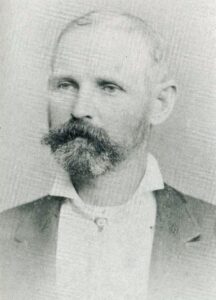Maryport Shipbuilding William Walker 1902-1911
Mr. W. Walker of Maryport took over the Ritson Yard in 1902 and launched a dozen vessels up to 1911 as well as carrying on the business of ship repairing. The first vessel down the ways was the “St. Catherine” a steel steamer of 442 tons, while the largest steamer built by Walker’s 1908 was “Ruth“, at 549 tons, named by his daughter when only ten years of age. The “Zenitieth” was the last broadside launch, while the “Endcliff” was launched conventionally in 1911 .
Menu: Shipbuilding Yards & Ships

The” Admiral” of 243 tons was built by Walker’s in 1906 and in the twenties and thirties she was owned by the Manchester, Liverpool Steamship Co. Ltd., and later by Monroe Bros. of Liverpool, but by 1939 her owners were the Admiral Shipping Company (Stewart and Partners – Belfast) and in 1 940 Isaac Stewart seems to have bought her outright and renamed her ” First“, Stewart and Partners remaining as managers.
On August 2nd 1954 she ran aground near the small Co. Antrim port of Glenarm but was refloated three days later. In 1957 she was sold to Miss M. McLennan of Angus and renamed “Middlebank“. About 1962-63 her owners changed again to Tay Sand Company, Dundee, who did not retain her long as she arrived at Granton on May 27th, 1964 for breaking up, having been in service for 58 years a great tribute to a Maryport built vessel.
Prior to her breaking up she visited Maryport regularly until shortly after the last war.
By 1914 the name of the yard had undergone another change to the Maryport Shipbuilding and Repair Co. and this Company launched the “Rhenus” in 1914, the last out of the River EIIen, but was followed by the “Silverburn” in September launched conventionally . The yard continued to engage itself in repair work, the “Silverburn” was the last of a long line of ships back to the “Sally” of 1765 that were Maryport built.
The reason for the cessation of building ships was not far to seek, the great war had broken out, manpower was to be a problem for the future years and eventually Maryport was unable to install the engines of vessels they built so after launching there were towed to the Clyde, this added to t he expense of building and finally the yard was unable to compete with steamers built at other ports.
THE STORY OF CAPTAIN ROBERT W. WALKER the man who helped to teach the Japanese the art of building ships the Maryport way

The history of Maryport’s great shipbuilding era would be incomplete without telling of the man who helped to teach the Japanese the art of building ships the Maryport way for it was here that he learned the craft of ship building in the town’s busy yards.
During the 1800’s Japan was devoid of the knowledge of global navigation and big ship handling, of the steam ship which was beginning its take over of the world’s shipping lines, or of ship building, so in order to put the records right Miss Robinson contacted the Embassy of Japan (London) and from thence to Mr. Matsumoto of the Nagasaki Shipyard Heavy Industries whose research on the vessel “Nrigata-Maru” of which Captain Walker was in command is as follows –
In 1855 a Birkenhead-built vessel named the “Behar” was launched having a gross tonnage of 1,603, and a 300 H.P. engine. She was built of iron, had bark sails and a screw propeller and was purchased by the “Meiji” Government and owned by it for 20 years until 1875 and was then loaned free of charge to the Mitsubishi Company for two years until 1877 in which year the Mitsubishi Company bought her and because of the weak condition of the engines converted the vessel into a sail powered boat, prior to this she had been given a Japanese name “Niigata-Maru“.
The story now takes on, that of “Captain Robert Wilson Walker” who had on several trips to Japan learned sufficient of the language to be able to communicate without an interpreter and upon being appointed an adviser on ships, shipping and ship building for ten years taught them the mysteries of navigation and ship handling and when the Japanese began to build their first big ships it was in the time honoured tradition and Captain Walker stood in to oversee the construction of his first command under the Japanese Rising Sun Flag.
She was the “Niigata-Maru” which was designed and built as a steamer but Captain Walker supervised her fitting out as a full rigged sailing ship, a craft he had learned at Maryport and on March 11th , 1878 she sailed from Yokohama arriving at London the first Japanese ship to do so, where new engines were installed, and her gross tonnage was increased to 1,910, and having sailed from Japan as a sailing ship she returned to Yokohama arriving on November 25th, 1878 as a steamer.
On the voyage were students of The Mitsubishi Institute of Mercantile Marine which is now the Tokyo University of Mercantile Marine, using the journey as a training exercise in all aspects of seamanship.
Captain Walker married a Japanese lady, they had five children and on a visit to Maryport she died, her body being buried at the town’s cemetery. Captain R. W. Walker was a forebear of “William Walker”, Ship Builder, Ship Repairer, Engineer, and Ship Chandler of Maryport.

Compiled by Miss Annie Robinson, MBE JP for Maryport Maritime Museum – Adapted for online appreciation by Peter Nicholson
